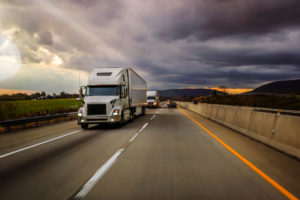By Kevin McAllister, Protocol
Good afternoon! As companies increasingly go electric, policymakers are setting their sights on autonomous vehicles. In today’s edition, we asked the experts to tell us what lessons from EVs we can apply to AV ambitions. Questions or comments? Send us a note at [email protected]
Alex Rodrigues
Co-founder and CEO at Embark Truck
One key policy parallel I see between electric and autonomous vehicles is the importance of offering pathways to opportunity for the existing workforce. When new technologies are introduced, there is often anxiety and confusion about how they will affect today’s workers.
The Biden administration’s approach to spurring domestic EV manufacturing and deployment through investments that create new job opportunities for auto workers, mechanics, electricians and other skilled trades provides a great model. Autonomous trucking offers the potential to create new career paths at all skill levels, including technician positions to maintain the many new AV components in autonomous trucks.
Those career paths will continue to grow as the AV industry grows. That growth can also be supported by legislation and regulations that give the industry long-term regulatory clarity and a pathway to scale nationwide. Policy measures recently implemented at the federal level have been effective in giving the EV industry and consumers the confidence it will take to foster mainstream EV adoption, thus expanding the EV market and creating more jobs within the EV industry.
We look forward to partnering with policymakers and industry stakeholders to make the United States a global leader in AV trucking development and spur local job creation in every corner of the country as we roll out this technology.
Ernestine Fu
Investor at Alsop Louie Partners and adjunct professor at Stanford University
New government policies or programs on AVs require several key considerations:
- Public health and safety standards: First and foremost, the role of government is to set public health and safety standards, with input from all stakeholders on what standards are most appropriate.
- Technology standards: Government should set technology standards that avoid too much duplication of effort, but still promote competition. Stakeholders need to be consulted to make sure the technology standards are neither too weak nor overly cumbersome for corporate players.
- Critical infrastructure: Make investments in critical infrastructure that serve the public good and also make the aforementioned standards easier to achieve.
- R&D sponsorship: Underlying these goals is the requirement of substantial R&D sponsorship, including long-term basic research, that enables advancements in said technologies and necessary infrastructure.
- Public information programs: Government can nurture adoption by developing information campaigns to educate the public on the rapidly developing technology and investment options.
The United States has achieved several of these objectives with EVs. Rigorous safety testing was implemented, due in part to concerns about the massive batteries used in those platforms. Local, state and federal partners also helped roll out decentralized networks of charging stations, along with various rebates to encourage EV adoption. Despite these efforts, the large-scale rollout of charging networks for EVs lagged behind consumer needs, especially in rural areas. R&D activities also became largely centralized within private corporations. As such, for AVs, the government should preemptively and deliberately study how best to roll out centralized or decentralized networks for large-scale ensembles of AVs (the Internet of Cars) in a way that benefits both rural and urban America. The federal government should also increase R&D funding to the public sector and academia so that America remains dominant in AV innovation, rather than allowing progress to stall after preliminary AV deployments.
Nat Beuse
VP of Safety at Aurora
We all have the same goal: to make our roads safer and our transportation systems more efficient. By ensuring regulations are technology- and business model-neutral, as well as by making clear distinctions between autonomous vehicles and advanced driver assistance systems, policymakers can facilitate productive competition and safe commercialization while maintaining high safety standards.
As policymakers take lessons from the electric vehicle revolution, the one that rises to the top is clear – safety and innovation aren’t mutually exclusive, in fact, they’re best when paired together.
Wiley Deck
VP of Government Affairs and Public Policy at Plus
Congress can facilitate this process by requiring the Department of Transportation to take affirmative action on the adoption of this technology through the legislative process. Ideally, this would require the appropriate government agencies (NHTSA and FMCSA), to work through a negotiated rule-making process, which would include all of the pertinent stakeholders to decide what works best for the nation as a whole and to allow for the seamless movement of autonomous vehicles across the country.
As one the first autonomous vehicles to be commercialized, autonomous trucks can be used to start the national framework process. The FMCSA already sets the national standards for the commercial vehicle driver’s license knowledge and skills testing in partnership with the Association of American Motor Vehicle Administrators; there is no reason they could not do the same with autonomous trucks. NHTSA can also utilize the same process to create a unified system to allow for the operation of autonomous passenger vehicles around the country.
Autonomous vehicles will make our roads safer, improve fuel efficiency and reduce greenhouse gas emissions. Adopting a uniform, national vision and regulatory structure will help drive faster adoption of this lifesaving technology.
Matthew Lipka
Head of Policy at Nuro
Nuro has always been dedicated to building battery-electric AVs. This was a contrarian choice when we launched in 2016, given the maturity and cost of battery technology and computing hardware, but it has become increasingly clear that the future is electric. Nuro is now onto our third-generation vehicle, and the lessons we’ve learned are helping us build the world’s first production-scale, zero-emission, autonomous delivery vehicle powered by renewable energy.
It’s critical that local delivery AVs like Nuro’s are zero-emission. Shopping and errands account for nearly 100 billion personal vehicle trips annually, and about 98% in gas-powered vehicles. An electric fleet of delivery AVs could be a great sustainable alternative to driving yourself to the store. Delivery AVs could ultimately help avoid 407 million tons of CO2 emissions from 2025 to 2035 — the equivalent of residential emissions from NYC, LA, Chicago and Houston over the last decade.
Current EV policy assumes that vehicles will be personally owned and primarily charged at home and work or during trips. Fleet-owned AVs could present new challenges in upfront cost, centralized charging locations and needed utility upgrades. Government programs that proactively address these issues can help AV manufacturers transition to electric vehicles.
Rob Grant
Senior vice president, Government Affairs and Social Impact at Cruise
Because the transportation status quo is unacceptable. For one, it is too polluting –– with transportation emissions contributing disproportionately to climate change and adverse health outcomes, particularly in underserved communities. Governments at the state, local, federal and global levels have mobilized around this mission-critical electrification imperative –– creating policy and taking much-needed action to stem the tide of emissions and help save the planet.
This is the same approach that governments at all levels must take to save lives lost to traffic violence. The status quo is unacceptable: over 40,000 Americans die each year from motor vehicle accidents, a sadly long-accepted yet worsening trend. This mission, too, is urgent, and we have an opportunity to put AV technology to work to address it –– but only if government takes action to support the development and deployment of autonomous vehicles here in the United States.
In fact, we can work toward both these goals simultaneously. Cruise has an entirely zero-emission fleet, powered by 100% renewable energy. And, as a shared fleet service, these vehicles can expand the public’s access to cleaner, more sustainable transportation –– regardless of whether a household can afford to purchase an EV or can conveniently charge.
This technology is here. With government action that leverages innovation to redress the transportation status quo, we can save lives while helping save the planet.
Erik Swedberg
Executive vice president and managing director, Americas at Dassault Systèmes
For autonomous vehicle deployment, in the near term we will see a continuing deployment of progressively more complex and functional Advanced Driver Assistance Systems to protect us as we drive. But for full autonomous, we first must develop and put into law the standards for autonomous vehicle verification and validation. Several Society of Automotive Engineers committees are working on these standards, but the legislation and the testing methods still need to solidify. Without legislation and the maturity of all the sensors and AI, there is no basis for product liability defense in court in Western countries. It will take many years and depends on use cases that will be driven by individual countries.
Another consideration is cybersecurity. As we add more software to our vehicles and integrate them into smart cities and mobility applications, risks of hacking and “automotive takeovers” will exponentially increase. There are several evolving standards for automotive vehicle protection from hackers, but automotive designers are just beginning to focus on these issues and are a long way off from full implementation. The good news is that auto manufacturers may be able to pull a page from the playbook of the aerospace and defense industry, which currently uses model-based systems engineering development methodology to integrate software security in the design phase.
Autonomous vehicles are a game-changer for humanity, and the industry urgently needs clear benchmarks and certifications around operational safety and IT security to ensure this new frontier doesn’t remain the Wild West.

